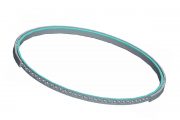- BALL BEARINGS
- FORKLIFT BEARINGS
- Forklift Chain Pulley
- Forklift Mast Roller
- Forklift Side Roller
- Forklift Combined bearings
- Combined Bearing Adjustable with Slide Block and Screw hole shaft QBB
- Combined bearing adjustable with screw (ball type) QBA-TS
- Combined Bearing with Nylon Slide Block Insert
- Standard Combined Bearings
- Combined Bearing Adjustable with Combined Bolt QRB-SW
- Axial Bearing adjustable with bracket QRA-P
- Axial Bearing Adjustable with Bracket and Combined Bolt
- Axial Bearing eccentric adjustable with hexagonal shaft
- Axial Bearing Eccentric Adjustable with Tooth form Shaft QRA-E
- Combined Bearing Adjustable with Combined Bolt and Slide Block Insert
- Combined Bearing Adjustable with Screw(Roller Type) QRA-S
- Radial Combined Bearing QRQ-W
- SLEWING BEARINGS
- Thin Section Bearings
- QIBR Interchange Type Thin Section Bearing from KAYDON
- QIBR Interchange Type Thin Section Bearing from SILVER
- QIBR Interchange Type Thin Section Bearing from SSB
- QIBR Interchange Type Thin Section Bearing from NSK
- QIBR Interchange Type Thin Section Bearing from INA
- QIBR Interchange Type Thin Section Bearing from RBC
- ROLLER BEARINGS
- OTHER BEARINGS

